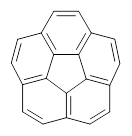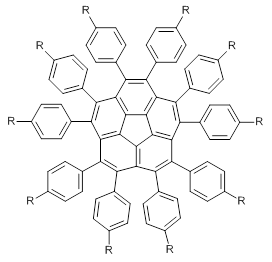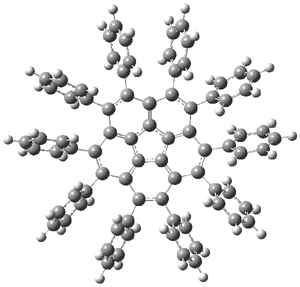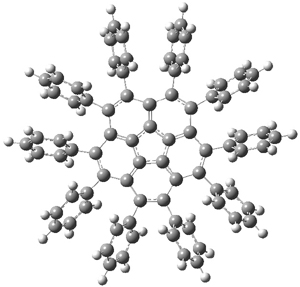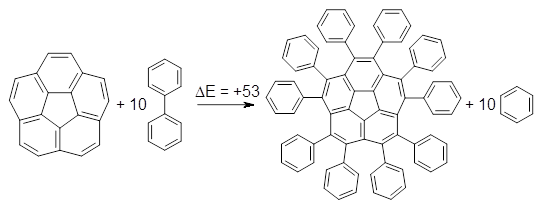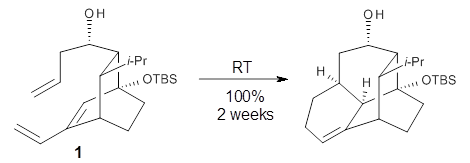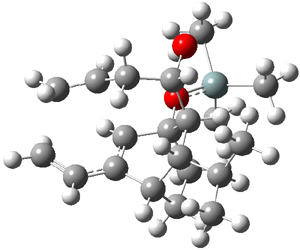Kozuch, S.; Gruzman, D.; Martin, J. M. L. "DSD-BLYP: A General Purpose Double Hybrid Density Functional Including Spin Component Scaling and Dispersion Correction," J. Phys. Chem. C, 2010, 114, 20801-20808
Kozuch, S.; Martin, J. M. L. "DSD-PBEP86: in search of the best double-hybrid DFT with spin-component scaled MP2 and dispersion corrections," Phys. Chem. Chem. Phys. 2011, 13, 20104-20107
Contributed by Steven Bachrach.
Reposted from Computational Organic Chemistry with permission
Kozuch, S.; Martin, J. M. L. "DSD-PBEP86: in search of the best double-hybrid DFT with spin-component scaled MP2 and dispersion corrections," Phys. Chem. Chem. Phys. 2011, 13, 20104-20107
Contributed by Steven Bachrach.
Reposted from Computational Organic Chemistry with permission
I just returned from the Southwest Theoretical Chemistry Conference held at Texas A&M University. My thanks again to Steven Wheeler for the invitation to speak at the meeting and for putting together a very fine program and conference.
Among the many interesting talks was one by Sebastian Kozuch who reported on an interesting double hybrid methodology.1,2 Working with Jan Martin, they defined a procedure that Kozuch referred to as “putting Stefan Grimme into a blender”. They extend the double hybrid concept first suggested by Grimme that adds on an MP2-like correction functional. Kozuch and Martin substitute a spin-component scaled MP2 (SCS-MP2) model for the original MP2 correction. SCS-MP2 was also proposed by Grimme. Lastly, they add on a dispersion correction, an idea championed by Grimme too. The exchange-correlation term is defined as
EXC = cXEX DFT + (1 – cx)ExHF + cCECDFT + cOEOMP2 + cSESMP2 + s6ED
where cX is the coefficient for the amount of DFT exchange, cC the amount of DFT correlation, cC and cSthe amount of opposite- and same-spin MP2, and s6 the amount of dispersion. They name this procedure DSD-DFT for Dispersion corrected, Spin-component scaled Double hybrid DFT.
In their second paper on this subject, they propose the use of the PBEP86 functional for the DFT components.2 Benchmarking against a variety of standard databases, including kinetic data, thermodynamic data, along with inorganic and weakly interacting systems, this method delivers the lowest mean error among a small set of functionals. Kozuch reported at the conference on a number of other combinations and should have a publication soon suggesting an even better method. Importantly, these DSD-DFT computations can be run with most major quantum codes including Orca, Molpro, Q-Chem and Gaussian (with a series of IOP specifications).
While double hybrid methods don’t have quite the performance capabilities of regular DFT, density fitting procedures offer the possibility of a significant reduction in computational time. These DSD-DFT methods are certainly worthy of fuller explorations.
References
(1) Kozuch, S.; Gruzman, D.; Martin, J. M. L. "DSD-BLYP: A General Purpose Double Hybrid Density Functional Including Spin Component Scaling and Dispersion Correction," J. Phys. Chem. C, 2010, 114, 20801-20808,
DOI: 10.1021/jp1070852
DOI: 10.1021/jp1070852
(2) Kozuch, S.; Martin, J. M. L. "DSD-PBEP86: in search of the best double-hybrid DFT with spin-component scaled MP2 and dispersion corrections," Phys. Chem. Chem. Phys. 2011, 13, 20104-20107, DOI: 10.1039/C1CP22592H

